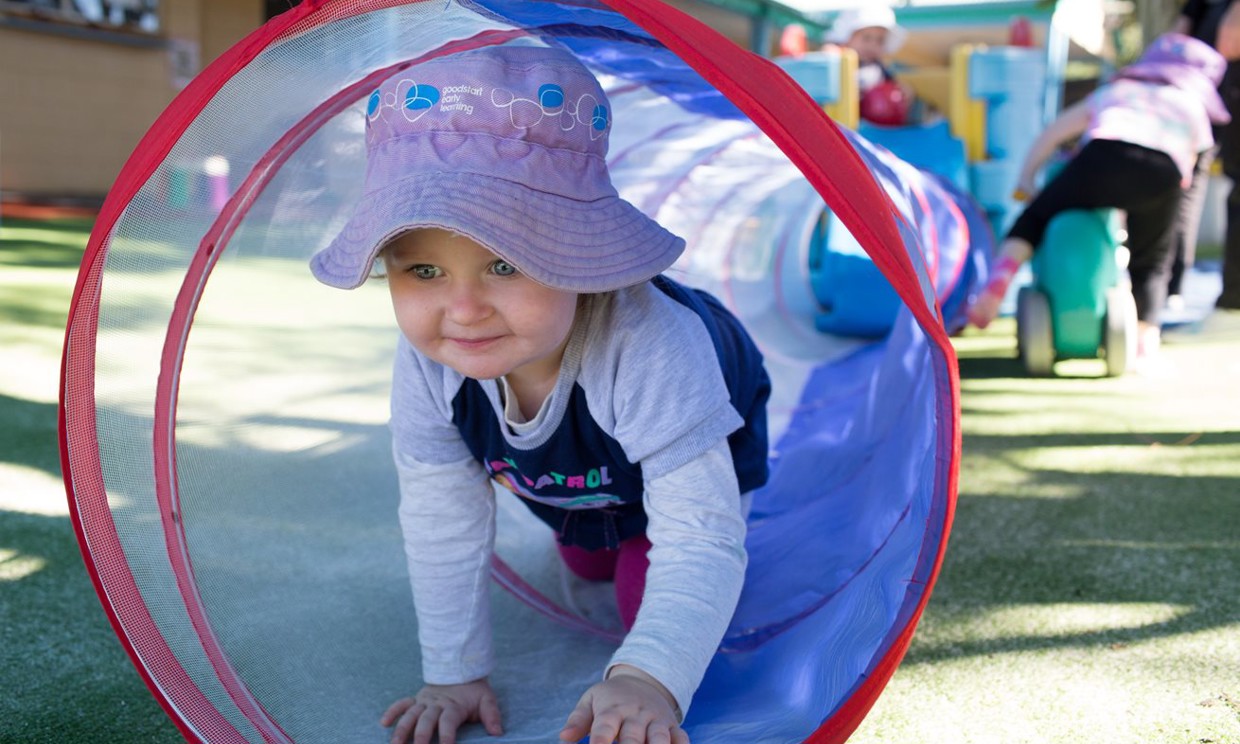“Look what I found!” When a child shares an unfamiliar object found within the home or out in the garden, parents have a few options to engage with them, says Goodstart’s early learning expert Lisa Palethorpe.
“Acknowledge what the object is, or better still, create a rich learning opportunity by turning the statement into a question asking the child, ‘what is it?’”
Sustained, shared thinking – a technique used by Goodstart educators – creates open-ended and exploratory conversations.
During the past two weeks Ms Palethorpe has discussed the valuable role of parents in stimulating a child’s learning and development through daily routines and providing access to open-ended items, such as leaves and buttons, and loose parts for play.
This week she explains how parents can use the technique of sustained, shared thinking to prompt and challenge a child’s thinking.
Sustained, shared thinking
This technique involves children and their parents working in a conversation to discuss and think about challenges, problems or solutions in an extended way.
“In essence, sustained, shared thinking builds on conversations with children,” she said. “It seeks to get more than yes or no answers.
“We encourage children to be inquisitive by asking ‘why’.”
She said, for example, if a child finds a sea urchin at the beach, ask them, ‘what do you think it is?’ ‘Why do you think that?’ Encourage them to use their senses to explore the object, “Is it rough or smooth?’
These conversation techniques are a great way to create meaningful learning opportunities from the simple act of a child finding a new and interesting object.
Some tips for open-ended and exploratory conversations:
Ms Palethorpe is national manager of Early Learning Capability at Goodstart. The Early Learning Capability Team develops high quality, evidence-based professional learning materials to improve early childhood practice and knowledge of children’s development, learning and wellbeing across Goodstart’s network of 645 centres.
“Acknowledge what the object is, or better still, create a rich learning opportunity by turning the statement into a question asking the child, ‘what is it?’”
Sustained, shared thinking – a technique used by Goodstart educators – creates open-ended and exploratory conversations.
During the past two weeks Ms Palethorpe has discussed the valuable role of parents in stimulating a child’s learning and development through daily routines and providing access to open-ended items, such as leaves and buttons, and loose parts for play.
This week she explains how parents can use the technique of sustained, shared thinking to prompt and challenge a child’s thinking.
Sustained, shared thinking
This technique involves children and their parents working in a conversation to discuss and think about challenges, problems or solutions in an extended way.
“In essence, sustained, shared thinking builds on conversations with children,” she said. “It seeks to get more than yes or no answers.
“We encourage children to be inquisitive by asking ‘why’.”
She said, for example, if a child finds a sea urchin at the beach, ask them, ‘what do you think it is?’ ‘Why do you think that?’ Encourage them to use their senses to explore the object, “Is it rough or smooth?’
These conversation techniques are a great way to create meaningful learning opportunities from the simple act of a child finding a new and interesting object.
Some tips for open-ended and exploratory conversations:
- ‘Tune in’ and listen carefully to what your child is saying
- Show genuine interest in their ideas and theories
- Recap what they have said, sometimes reminding them of what they said in an earlier, related conversation
- Clarify what they mean, sometimes asking open-ended questions “what if?” or “what next” that will encourage them to expand an idea
- Expand on their answers and ideas
- Encourage their curiosity by being curious yourself
- Encourage them to ask questions
- Practise active waiting, allowing them enough time to ask and answer questions
- Encourage them to analyse and reason by asking them why/how questions. These will prompt children to make predictions and comparisons, and to evaluate their own responses.
Ms Palethorpe is national manager of Early Learning Capability at Goodstart. The Early Learning Capability Team develops high quality, evidence-based professional learning materials to improve early childhood practice and knowledge of children’s development, learning and wellbeing across Goodstart’s network of 645 centres.


